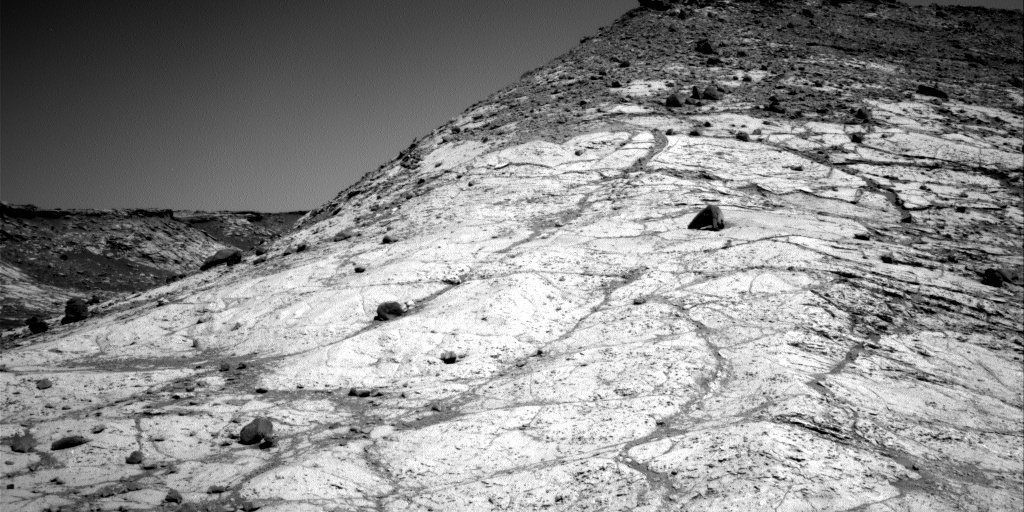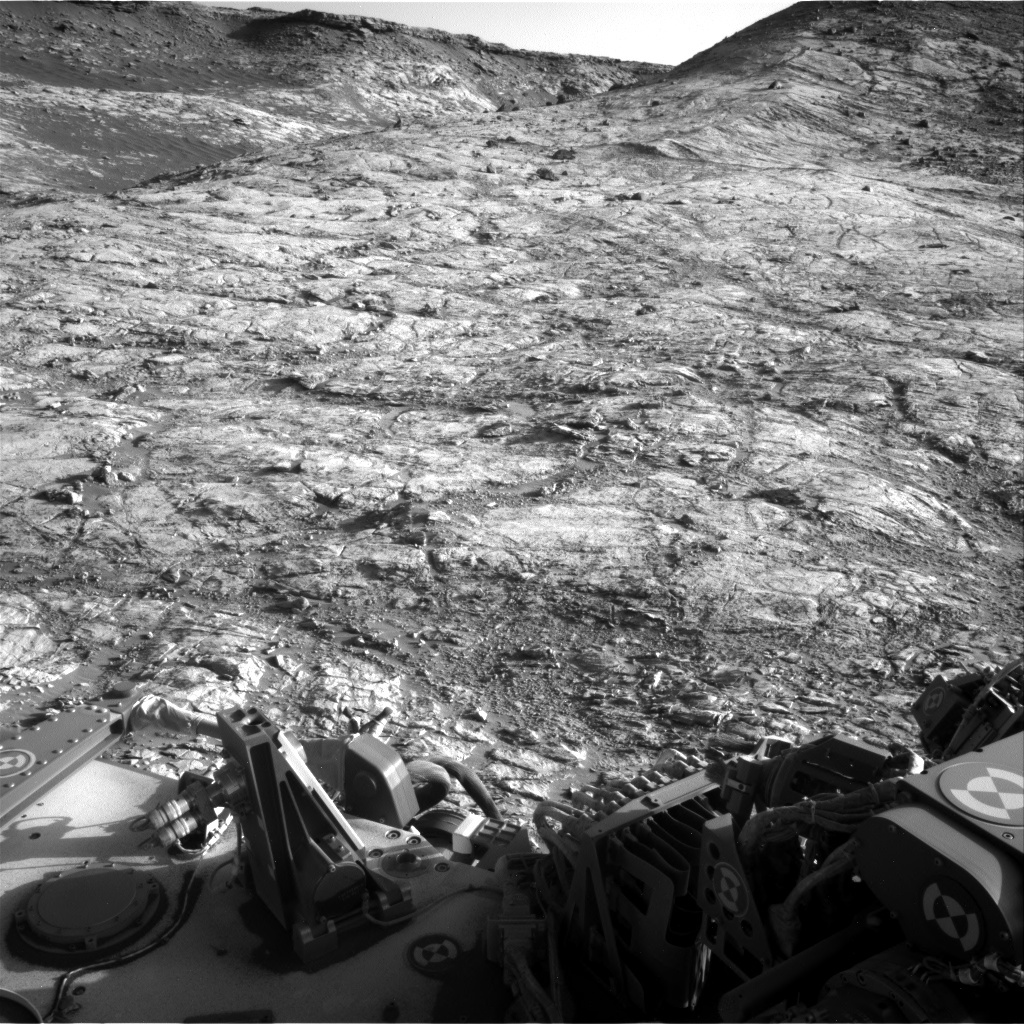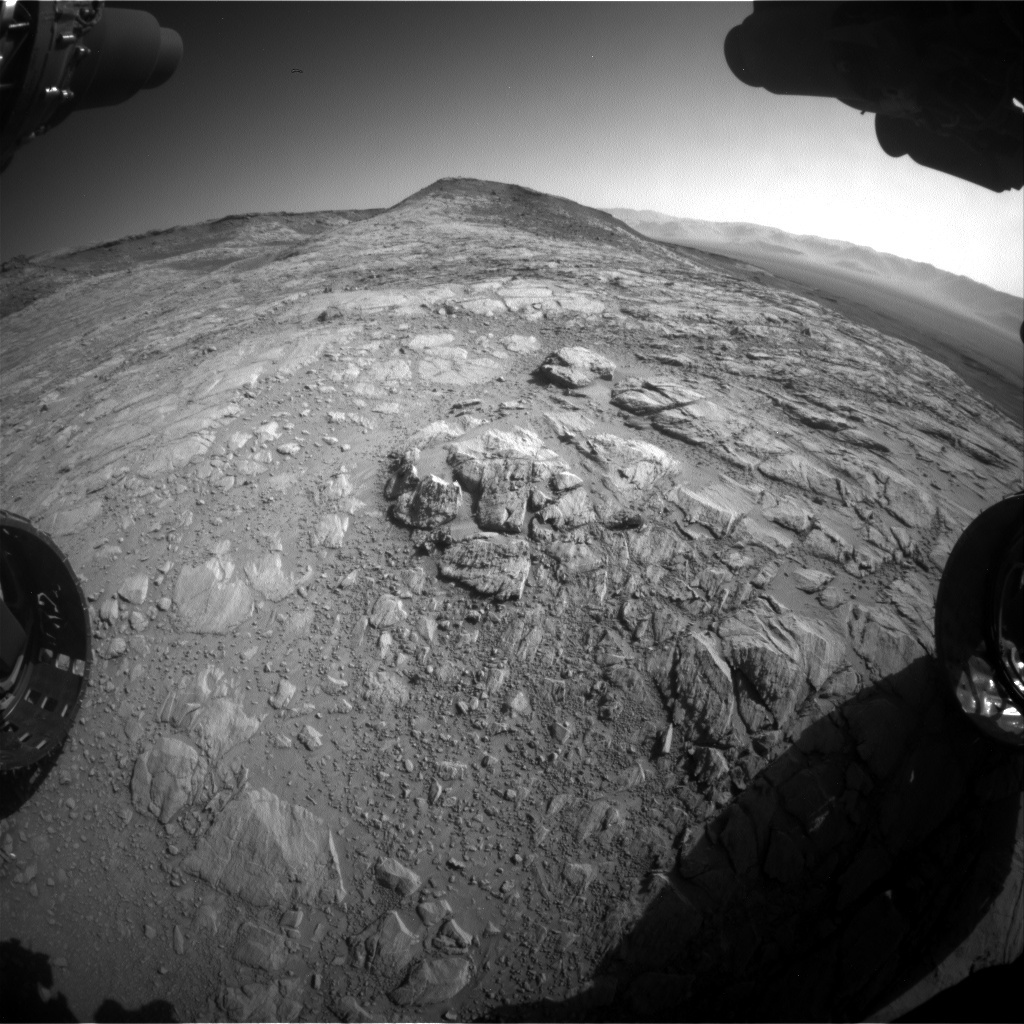January 11, 2020
Sols 2642-2644: Contact Science at Western Butte

Curiosity is still on the shoulder of Western Butte at a location that provides a good vantage point, exposes changes in stratigraphy, and reveals some interesting float blocks in our workspace. On Wednesday (planning Sols 2640-2641) we were able to conduct contact science on a bedrock target named “Buchan Haven,” as seen in the above MAHLI image, which also shows where the Dust Removal Tool (DRT) cleared away a fresh surface. The three sol weekend plan is our second opportunity to do contact science here.
I was the SOWG Chair today, and it was a pretty busy day of planning. The plan kicks off with several ChemCam observations to assess the chemistry of a nodule target “Strathy Point,” a vein target “Abernethy,” and bedrock target “Glen Clunie,” along with Mastcam documentation of these rocks. Then MAHLI and APXS will be used to characterize the grain size, sedimentary structures, and chemistry of “Lomond Hills” (a dark float block that might represent the butte capping unit), and “Abernethy” (an interesting vein). The second sol includes additional remote sensing, with several long distance RMI mosaics to assess the stratigraphy of the pediment and Gediz Vallis ridge, and a Mastcam multispectral observation of a light-toned vein at “Hascosay.” The Environmental theme group planned a number of atmospheric monitoring observations, including a Mastcam tau, crater rim extinction, Navcam line of sight, and dust devil and suprahorizon movies. Then Curiosity will drive ~45 m to the northeast, down the eastern slope of the butte. After the drive we’ll acquire imaging to help with context and targeting for next week. On the morning of Sol 2644, Curiosity will acquire additional environmental monitoring observations, and then run a SAM atmospheric methane observation.






